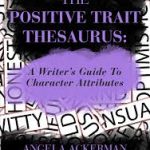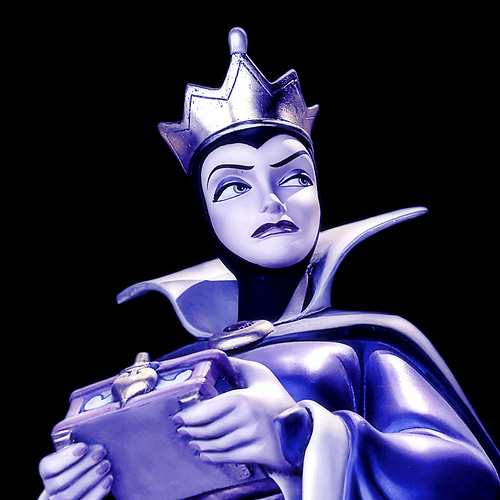Positive Attributes: The Way to a Reader’s Heart
Today’s guest post is the second of two from author Becca Puglisi. With her blogging partner, Angela Ackerman, she has written three essential resource books for fiction writers that I can’t recommend enough. Last year they released The Emotion Thesaurus to great acclaim, and now they have followed through with the release of the companion books The Positive Trait Thesaurus and The Negative Trait Thesaurus. Because I feel the information they expound on in these books is so important for novelists to understand and master, I asked Becca to share some of the material from these two new releases with the readers of Live Write Thrive. If you want to be a great novelist, you need these books and should use them extensively as a resource in your writing.
Last week, I briefly discussed the character arc and explained its basic elements. The big takeaway was that flaws play a large part in a hero’s journey because they provide her with something that must be overcome. But if you want to write a successful protagonist (or villain or support character, for that matter), positive traits are equally important, for different reasons.
To give some insight as to why your hero needs a few well-chosen strengths, I’d like to share an excerpt from The Positive Trait Thesaurus: A Writer’s Guide to Character Attributes. Hopefully, this information will arm you with the knowledge of why strengths are necessary, and encourage you to pick the right ones for your hero.
Sink or Swim?
Readers today have a landslide of books to choose from, putting incredible pressure on writers to produce unique stories with dynamic, fascinating characters. According to Bowker stats, in 2010 alone, more than three million books hit the market. Of those, a whopping 2.7 million were self-published titles, proof that this sector of the industry is actively growing.
Within this flood of fiction, some books rise while others sink. Although eye-catching covers, professional editing, and a well-directed marketing campaign contribute to how well a title will do, without a great story to fill its sails, a book is doomed to drift. And what sturdy mast supports any meaningful work of fiction? Multifaceted characters who make each moment so personal and compelling that readers can’t help but care about them.
Creating realistic, never-before-seen characters who take readers on an emotional journey should be the goal of every writer, yet this is no easy feat. Writers must delve into a character’s personality to understand his desires, motives, needs, and fears. Both flaws and positive attributes help forge a well-constructed character. ‘
Flaws not only humanize the story’s cast, they also give them something to overcome so they can achieve self-growth. Positive attributes are equally as important, because while human nature causes us to hone in on people’s flaws, it is a person’s strengths we admire most. Readers must feel this same admiration for characters in order to root for them.
The Secret to Hooking a Reader
As a result, authors must learn how to hook readers quickly, and hook them hard. Engaging the reader starts with a clever or intriguing first line and never lets up. During opening paragraphs, there are many ways to draw the audience in—eliciting sympathy by showing a protagonist’s current hardship, beginning the scene at a pivotal moment that contains high stakes, or introducing a mysterious story element that makes the reader immediately wonder what is going to happen next.
These simple hooks may create interest, but eventually they play themselves out, because while a character’s hardship or pain may generate some sympathetic feelings from the audience, only genuine empathy can spark a reader-character bond. It’s important to forge this connection as soon as possible so the reader will recognize the protagonist as honorable or deserving in some way, making him worth caring about.
So . . . if empathy is the towrope tying readers to characters, how do writers secure this line early on and keep their audience engaged? Simple. Add punch to a hook by showing the hero’s personality in a positive light.
Follow the Hook with a Punch!
For example, a hardened criminal digging through a trash bin for scraps might make for an unusual opening scene. But since readers know that he’s a criminal, they may wonder if he’s brought his misfortune upon himself. Because they can’t empathize with him, they don’t care too much about his situation.
But what if he’s trying to provide for a trio of orphans rescued from a child-smuggling ring? By hinting at a positive aspect of his personality right away—be it his kindness, a sense of responsibility, or the desire to protect someone vulnerable—he becomes infinitely more interesting and readers catch a glimpse of a hero who is worth believing in. The character also becomes intriguing because of the questions this new information raises: if he’s a criminal, why did he save the children? Why does he care? What made him look beyond himself to help someone else?
aspect of his personality right away—be it his kindness, a sense of responsibility, or the desire to protect someone vulnerable—he becomes infinitely more interesting and readers catch a glimpse of a hero who is worth believing in. The character also becomes intriguing because of the questions this new information raises: if he’s a criminal, why did he save the children? Why does he care? What made him look beyond himself to help someone else?
Suggesting the why behind character behavior is the second half of any great hook. “Show, don’t tell” still applies—meaning behavior and actions are the best vehicles for revealing a character’s personality. The why tells us a bit about who the character is, shedding light on what morals and values he holds dear. Revealing a protagonist’s positive attributes can also elicit admiration, even for an unlikable hero, and tells the audience that this is someone worth getting to know. Seeing hints of greatness through a character’s actions and personality is what helps readers to become emotionally invested.
Feature Photo Credit: YannGarPhoto via Compfight cc
Becca Puglisi is the cocreator of The Bookshelf Muse, an award-winning online resource for writers. She has also authored a number of nonfiction resource books for writers, including The Emotion Thesaurus: A Writer’s Guide to Character Emotion; The Positive Trait Thesaurus: A Writer’s Guide to Character Attributes; and The Negative Trait Thesaurus: A Writer’s Guide to Character Flaws. A member of SCBWI, she leads workshops at regional conferences, teaches webinars through WANA International, and can be found online at her Writers Helping Writers website.













As I’m in the midst of fleshing out my protagonist and antagonist, your blog today was invaluable to me. Thank you!
Yay! So glad it came at a good time. Best of luck!
Great blog. Will link to it for my writing classes. Thanks.
Thanks, Carol!
This is beautiful! And so, so helpful. Thanks!
Writing first fiction sequel mystery murder novel. Probably will turn into series. Can you connect me to your blog. You have good ideas and I am open to all that come my way.
Jeff
If you’re looking to subscribe to Becca’s blog, Writers Helping Writers, here is the link. Just put in your e-mail address in the window on the left side to subscribe: http://writershelpingwriters.net/
Just recently decided my chapter 1 needed to be chapter 2 in order to create sympathy for my heroine. This post came at a good time to help create that sympathy.
Becca,
For a couple of years now, I have been thinking something similar, but not so well organized or expressed, based on the opening hooks and story arcs of books that pulled me in and didn’t let go. While I’m enjoying reading some older books, it strikes me that one written like The Hobbit couldn’t be successful today. Suzanne Collins, Patrick Ness, and James Dashner’s recent YA blockbusters all start with that hook-and-punch. It’s hard for me to get interested in a book these days without that kind of start.
However, I have to reveal my own strength/weakness here. I’m an editor, and can’t help it. Please, while dispensing such useful advice, don’t “hone in,” (http://public.wsu.edu/~brians/errors/hone.html) unless the preposition is followed by the description of a knife-sharpening facility.
Cheers,
Steve